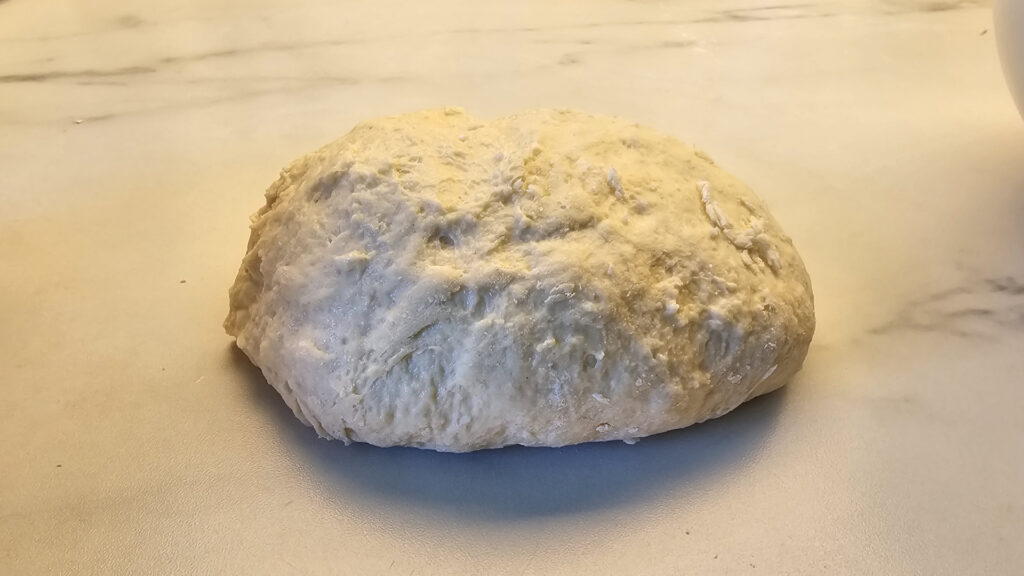Have you ever come across the term “shaggy dough” in a recipe and wondered what it meant? In this post, we’ll break down what it is, what it looks like, and its role in creating the perfect pizza.
What is Shaggy Dough?
Shaggy dough is the initial stage of dough mixing where the ingredients are just combined, resulting in a rough, sticky mixture. At this stage, the dough mix should be rough and uneven, with lumps and a slightly sticky texture. It might not look pretty, but this shaggy mass is essential for proper dough development.
- Definition: Shaggy dough refers to a rough, sticky mixture of flour, water, yeast, and salt where the ingredients are just combined.
- Characteristics: The dough will appear lumpy, uneven, and not fully cohesive. It’s a stage where the flour has absorbed some water, but the dough is far from smooth.
Visual Guide: What Does Shaggy Dough Look Like?
Identifying shaggy dough is easier with a visual reference. Here are the key visual cues:
- Appearance: The dough looks rough and irregular, with visible lumps of flour and wet spots.
- Texture: It feels sticky to the touch and may cling to your fingers.
- Consistency: The dough is not yet smooth and elastic. It appears loose and unstructured.

The Appearance and Texture
Shaggy dough has a coarse and sticky texture. When the flour is first mixed with water or other liquids, the mixture is not yet smooth or elastic. Instead, it looks uneven with visible clumps of flour and wet patches. This unevenness is what gives the dough its “shaggy” appearance. The dough might feel tacky to the touch and may not hold together well. Despite its rough look, this stage is an important part of the dough-making process.
The Role in Gluten Development
In pizza and bread making, gluten development is a key factor that determines the texture and rise. When mixing ingredients to form shaggy dough, gluten strands begin to form. These strands provide the dough with the strength and elasticity needed to trap gas produced by yeast during fermentation. Although the dough at this stage is far from ready, it sets the foundation for the kneading process, which further develops the gluten network, transforming the dough into a more cohesive and elastic mass.
The Role of Shaggy Dough in Pizza Making
Shaggy dough plays a vital role in the pizza-making process. Here’s why it’s important:
- Hydration: The shaggy dough stage ensures that all the flour is hydrated. This is essential for gluten development, which gives the dough its structure and chewiness.
- Gluten Development: At this stage, gluten strands start to form, which will later provide the elasticity and strength needed for the dough to rise properly.
- Preparation for Kneading: Shaggy dough sets the stage for kneading. Once it rests, the gluten relaxes and the dough becomes smoother and more elastic, ready for further development.
Application in Neapolitan Pizza: In making Neapolitan pizza, formed a shaggy mass of dough is the first step in creating an airy, tender crust. After mixing the ingredients to a shaggy consistency, allow the dough to rest. This helps in further hydration and gluten formation. This step is crucial for achieving the signature texture of Neapolitan pizza crust.
- Is Your Pizza Dough Too Dry? Here is How to fix it! - June 10, 2024
- The Ultimate Guide to the Pizza Dough Windowpane Test - June 8, 2024
- The Ultimate Guide to Autolyse Pizza Dough - June 7, 2024